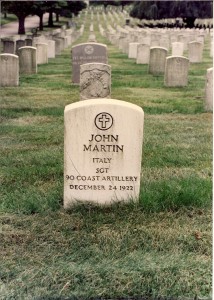Custer in the Movies
By Michael L. Nunnally
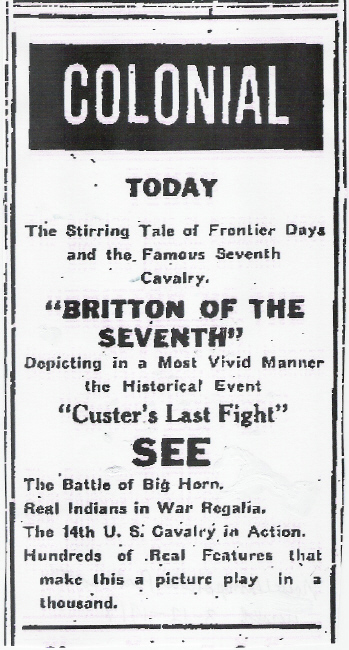
Hollywood has attempted the Custer/Little Bighorn saga a number of times usually with disastrous results. Facts have never really mattered to tinsel town and early movies were full of fictitious characters and absurd situations. Several attempts in recent years have been quite good but one major problem lies in the fact that Hollywood has always felt compelled in making George Armstrong Custer either a hero or villain. A true historical bio has never been accomplished. His image in more recent years has been based on the political climate in America rather than any actual historical facts. The battle scenes in the first Custer movie, Custer’s Last Stand filmed in 1909, were later used in several other silent movies on the subject. Custer’s Last Stand featured in a number of early TV shows including the Twilight Zone, Have Gun Will Travel, Branded and many others. In 1967 Custer appeared in his own TV show Custer starring Wayne Maunder. Much of the information contained here comes from two excellent articles by Custer film historian Paul Gagliasso. I don’t claim this list is a definitive list but rather a good starting point into the subject at hand. Corrections or additions are welcome.
d (director) w (writer) c (cast)
The Badlands of Dakota Universal Pictures 1941 B&W When Wild Bill Hickok (Dix) steals saloon keeper Bob Holliday’s (Crawford) girl trouble begins. Featuring an array of Western legends including Hickock, Calamity Jane and George Custer (Addison Richards). Entertaning Western.
d Alfred E. Green w Gerald Geraghty
c Robert Stack, Ann Rutherford, Richard Dix, Francis Farmer, Broderick Crawford, Andy Devine, Addison Richards
Bob Hampton of Placer Bob Neilan Productions 1921 B&W Based on the novel and character created by Randall Parrish. The adventures of Bob Hampton (Kirkwood) with General Custer (Dwight Crittendon) on the Little Big Horn. A very young Howard Hawks served as asst. director. Filmed in Montana and Arizona.
d Marshall Neilan w Marion Fairfax
c James Kirkwood, Wesley Barry, Marjorie Drew, Dwight Crittendon, Pat O’Malley, Noah Berry
Bugles in the Afternoon Cagney Productions 1952 Technicolor A scouting part led by Schaffer (Milland) into Sioux country supplies General Custer (Sheb Wooley) with much needed information on the hostile Indians.
d Ray Rowland w Harry Brown, Daniel Mainwaring
c Ray Milland, Helena Carter, Hugh Marlowe, Barton McLane, George Reeves, Sheb Wooley
Campaigning With Custer Bison Motion Pictures 1913 B&W (Lost film) c William Clifford, Sherman Bainbridge, Val Paul, Clarence Burton
Chief Crazy Horse U-I 1955 Technicolor Crazy Horse (Mature) leads his tribe against Custer at the Little Bighorn. Low budget treatment with cheesy last stand. Standard Hollywood stuff. Captain William J. Fetterman makes an appearance. James Millican plays Gen. George Crook and had also played Custer in 1951’s Warpath.
d George Sherman w Franklin Coen, Gerald Drayson Adams
c Victor Mature, Suzan Ball, John Lund, Ray Danton, David Janssen, James Millican
Crazy Horse Turner Pictures 1996 color Made for TV movie about the famous Sioux warrior. A very good attempt.
Written by Robert Schenkkan who played Captain Thomas Weir in 1991’s Son of the Morning Star.
d John Irvin w Robert Schenkkan
c Michael Greyeyes, Ned Beatty, John Finn, Peter Horton, Wes Studi, August Schellenberg, Daniel O’Haco
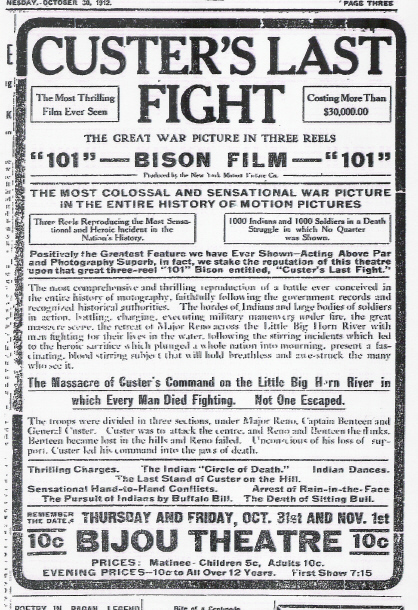
Custer’s Last Fight Bison 101 1912 B&W The only surviving copy ends in the middle of the battle. Some of the battle sequences are known to have been used in other movies. Filmed in the hills near Malibu using the famed 101 Ranch and ranch hands as extras. Francis Ford (Custer) served as both star and director of the movie. Grace Cunard played Mrs. Custer. Re-released in 1925 as Custer’s Last Raid. Ford was the older brother of famed director John Ford and in later years appeared in a number of the younger Ford’s pictures in walk on parts. Francis Ford later appeared in another Custer picture, 1941’s They Died With Their Boots On, directed by Raoul Walsh. Ford appeared in an astonishing 479 motion pictures and is best remembered as the sick old man who gets out of bed to watch the town’s big fight in The Quiet Man directed by brother John.
d Francis Ford w Richard V. Spencer
c Francis Ford, Grace Cunard, William Eagle Shirt, V. Barney Sherry
Custer’s Last Raid This 1925 movie was the same movie as Custer’s Last Fight released in 1912 (above).
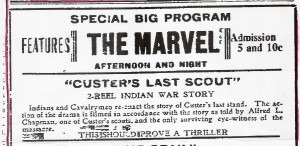
Custer’s Last Scout Bison Motion Pictures (as 101 Bison) 1915 B&W (Lost film) Alfred Lorenzo Chapman toured the country making personal appearances at carnivals and fairs signing autographs and telling his extraordinary story of witnessing Custer’s Last Stand. Hollywood recognized a good tale when they saw one and cast Chapman as the ‘scout’ in the movie based on his incredible story. Listed as Scott Chapman in credits. One of Hollywood’s early attempts at the Custer saga. Clifford had starred in Campaigning With Custer two years before and stock footage from that movie could have been used in Custer’s Last Scout. No copies are known to exist. Check your attic. Directed by Henry MacRae who directed some of the first Tarzan pictures.
d Henry MacRae w (?)
c William Clifford, Marie Walcamp, Scott Chapman
Custer’s Last Stand Selig Polyscope Company 1909 B&W (Lost Film) Believed to have been shot in Selig’s Chicago studio it is considered the first movie on the Custer/Little Big Horn story. Some later Custer movies may have contained stock footage of the battle scenes taken from the movie. Film no longer exists.
d Francis Boggs
c Hobart Bosworth, Bett Harte, Fran Walsh “The cast includes three Sioux who were present at the actual event in 1876 that the film is based on. The producer had hoped to gain historical information from them, but said later that “the most we could get out of them was that the fight was over so quickly that they could remember little about it.” The Internet Movie Database (IMDb)
“American Film Institute Catalog of Film Beginnings 1893-1910 erroneously credits Tom Mix in the cast of this film; it’s a Selig West Coast production made before Mix came to California and before he entered films.” IMDb
Custer’s Last Stand Stage and Screen 1936 B&W Another of Hollywood’s earlier attempts on the famous last stand. A gold prospecting Indian attempts to warn Custer (Frank McGlynn, Jr.) of danger. Starring William Farnum who was the brother of Dusty Farnum, who played Gen. Custer in 1926’s The Flaming Frontier. Elizabeth Custer (Ruth Mix) makes an appearance.
d Elmer Clifton
c William Farnum, Rex Lease, Reed Howes, Jack Mulhall, Frank McGlynn, Jr., Ruth Mix
Custer of the West Cinema/Security 1967 Super Technirama A fat Custer fights Hollywood Indians. Shaw, sporting a bad wig, is totally miscast as George Armstrong Custer. Shaw’s then wife Mary Ure plays Elizabeth Custer. Dreadful stuff. Writer Bernard Gordon and the production department did very little research into the actual event. The worst of the Custer films and a terrible Western to boot. Filmed in Spain. Did I mention it was dreadful?
d Robert Siodmak w Bernard Gordon
c Robert Shaw, Robert Ryan, Jeffery Hunter, Mary Ure, Ty Hardin, Lawrence Tierney “Fairly ambitious bio of famed general suffers from script that doesn’t quite know how to characterize him.” Leonard Maltin
The Flaming Frontier Universal 1926 B&W One of the earliest attempts on Custer’s Last Stand and the Pony Express. Supposedly filmed with a staggering $400,000 budget in 1926, the 50th Anniversary of the Custer fight. Shot in California with Umatilla and Cayuse Indians as extras. Several veterans of the Battle of the Little Bighorn attended the New York premiere among which was 85 year old Brig. Gen. Edward Godfrey. Elizabeth Custer declined an invitation.
d Edward Sedgwick w Charles Kenyon, EdwardJ. Montagne
c Hoot Gibson, Ann Cornwall, Dustin Farnum (Custer)
The Glory Guys Levy-Gardner-Laven 1965 color An Indian hating army general with political aspirations leads his men against overwhelming hordes of Indians. Sound familiar? Filmed in Durango, Mexico, this was a thinly veiled version of the Little Bighorn story. The fort was later used for Chisum.
Written by a young Sam Peckinpah.
d Arnold Levin
c Tom Tyron, James Caan, Slim Pickens, Senta Berger, Harve Presnell
The Great Sioux Massacre Columbia/FF 1965 Eastmancolor Major Reno (Cotton) and Captain Benteen (McGavin) are court-martialed after Custer’s Last Stand. Standard Hollywood treatment of history. Actor Phil Carey (Custer) played Capt. Keogh in 1958’s Tonka. Average at best.
d Sidney Salkow w Fred C. Dobbs
c Joseph Cotton, Darren McGavin, Phil Carey, Nancy Kovack, Julie Sommars, Michael Pate
Little Big Man Stockbridge/Hiller/Cinema Center 1970 Technicolor Based on Thomas Berger’s novel in which the sole white survivor of Custer’s Last Stand tells his life story. Filmed near the actual battlefield on the Crow Reservation in Hardin, Montana. Custer and his soldiers in the movie appear as the bad guys. Unlike the character in Berger’s novel Penn’s Custer is a racist fool with no redeeming qualities and as ridiculous as any character in Blazing Saddles. The battle scenes are well done although Custer’s attack on the village is closer to Reno’s valley fight which isn’t shown. Chief Dan George was nominated for best supporting actor. “General, you go down there…if you got the nerve!”
d Arthur Penn w Calder Willingham novel Thomas Berger
c Dustin Hoffman, Martin Balsam, Faye Dunaway, Chief Dan George, Richard Mulligan, Jeff Corey
The Plainsman Paramount Pictures 1936 B&W Wild Bill Hickok (Cooper) attempts to stop an Indian uprising started by gun-runners. Buffalo Bill and George Custer (Miljan) throw in their support to Hickock but this DeMille movie lacks a good script.
d Cecil B. DeMille w Courtney Ryley, Frank J. Wilstack
c Gary Cooper, Jean Arthur, James Ellison, Charles Bickford, Helen Burgess, John Miljan
“About as authenticate as Blazing Saddles but who cares–it’s still good fun.” Leonard Maltin
Red Tomahawk A.C. Lyles/Paramount 1967 Technicolor Deadwood, South Dakota goes on the alert after Custer’s defeat on the Little Bighorn.
d R.G. Springsteen w Steve Fisher
c Howard Keel. Joan Caulfield, Broderick Crawford, Scott Brady, Wendell Corey, Richard Arlen, Tom Drake
The 7th Cavalry Producers-Actors Corporation 1956 Technicolor An army captain who missed the Little Big Horn battle tries to redeem himself by volunteering for burial detail. Capt. Benteen (Michael Pate) and Maj. Reno (Frank Wilcox) make an appearance. Filmed in Mexico.
d Joseph H. Lewis w Peter Packer, Glendon Swarthout
c Randolph Scott, Barbara Hale, Jay C. Flippin, Frank Faylen, Denver Pyle, Harry Carey, Jr.
The Scarlet West Frank J. Carroll Productions 1925 B&W (Lost Film) Cardelanche (Robert Frazier), an Eastern educated Indian, returns to his people and is rejected. He saves a cavalry detachment and is promoted to captain and falls in love with the post commander’s daughter (Clara Bow). When his people massacre Custer Cardelanche realizes he can no longer live among the whites and returns to his people leaving his love behind. Elizabeth Custer (Ruth Stonehouse) is the only real person portrayed in the film. No copies of The Scarlet West are known to exist. Ruth Stonehouse was one of the few women involved in the actual business end of the film industry at the time–she co-owned Essanay Films studio along with actor ‘Gilbert M. ‘Broncho Billy’ Anderson’ and businessman George K. Spoor and made over 100 films for the company.
d John G. Adolf w Anthony Paul Kelly
c Robert Frazier, Clara Bow, Robert Edeson, Walter McGrail, Ruth Stonehouse
She Wore a Yellow Ribbon RKO/Argosy 1949 Technicolor Retiring cavalry officer must deal with Indian uprising. Beautifully written and acted Ford film with all of the Ford ingredients including real Indians. Not really a Custer movie but at one point in the movie Wayne’s character Capt. Brittles talks about the deaths of Custer, Tom Custer, Myles Keogh at his wife’s grave.
d John Ford w Frank Nugent, Laurence Stallings
c John Wayne, Joanne Dru, John Agar, Ben Johnson, Harry Carey Jr., Victor McLaglen, Mildred Natwick, George O’Brien, Arthur Shields
Sitting Bull UA/W.R. Frank/Telvoz of Mexico 1954 Eastmancolor A cavalry officer befriends the legendary Sioux leader (J. Carroll Naish) after the massacre of Custer (Douglas Kennedy ) on the Little Bighorn. Average grade B Hollywood western. Sidney Salkow went on to direct another Custer movie 1965’s Great Sioux Massacre.
d Sidney Salkow w Jack de Witt, Sidney Salkow
c Dale Robertson, Mary Murphy, J. Carrol Naish, Iron Eyes Cody, Douglas Kennedy John Litel
Son of the Morning Star Republic Pictures 1991 color Made for television account based on Evan Connell’s bestseller book on the Battle of the Little Bighorn. As near to fact as Hollywood has ever come to the actual event and the only Custer picture to show the principal characters. Both the Custer and Reno fights are well done. Script written by Harrison Ford’s then wife Melissa Mathison. An excellent attempt at the real event. “Tonight we go home by a road we do not know.”
d Mike Robe w Melissa Mathison
c Gary Cole, Rosanna Arquette, Stanley Anderson, Rodney Grant, David Strathairn, Michael Medeiros, Edward Blatchford, Tom O’Brien, Terry O’Quinn, Nick Ramus, Tim Ransom, Dean Stockwell, Robert Schenkkan
They Died with Their Boots On Warner 1941 B&W Dashing Errol Flynn as dashing George Armstrong Custer and his death at the Little Bighorn. Custer sacrifices his command to stop Crazy Horse (Quinn) and a corrupt Indian agent (Kennedy). Of little historical value and rather silly but loads of fun and incredibly charming. Flynn considered this his favorite movie role. Filmed in the rolling hills of Warner Studio’s back lot of Lasky Mesa in Agoura, CA. All American Indian athlete Jim Thorpe appears as an extra. The flame that lit the candle for thousands.
d Raoul Walsh w Wally Kline, Aeneas Mackenzie
c Errol Flynn, Oliva de Havilland, Arthur Kennedy, Anthony Quinn, Sidney Greenstreet, Charles Grapewin, Gene Lockhart, Hattie McDaniel, Francis Ford.
“Studio head Jack Warner was a notorious spendthrift who didn’t like the expense of sending a film company out to a distant location. Still, no film had more influence on the public’s perception of Custer than this 1941 epic, until the cynical ‘Little Big Man’ came along in 1970.” Paul Gagliasso, Old West Journal, Winter 2000
Tonka Walt Disney 1958 Technicolor Disney’s story of Comanche, the noble steed of Capt. Keogh (Phil Carey) and sole survivor of Custer’s Last Stand and his many adventures. One of the first movies to portray Custer in a negative light which was quite surprising coming from Uncle Walt. Movie tagline: The Untold Story Behind the West’s Strangest Legend. d Lewis R. Foster w same
c Sal Mineo, Phil Carey, Jerome Courtland, Rafael Campos, H. M. Wynant
Warpath Paramount Pictures 1951 Technicolor John Vickers joins the Seventh Cavalry seeking revenge for his fiancée’s murder. Filmed on the Crow Reservation, Hardin, Montana. James Millican (Custer) later played Gen George Crook in 1955’s Chief Crazy Horse.
d Byron Haskin w Frank Gruber
c Dean Jagger, Edmond O’Brien, Forrest Tucker, Harry Carey, Jr., James Millican (Custer).
***************************************************************************************************
Sources:
Custer in the Movies list compiled by Dan Gagliasso, LBHA Research Review, Volume V, No. 2, Summer 1971 Errol Flynn’s Custer & The Test Of Time by Louis Kraft, Research Review, The Journal of the Little Big Horn Associates-Vol. 13, No. 2. Summer, 1999 Following The Custer Movie Trail. By Dan Gagliasso. Old West Journal, Winter 2000 The Internet Movie Database (IMDb) Leonard Maltin’s 2007 Movie Guide. Penguin Books. Silver Screen: greatest silent film about Custer by Dan Gagliasso. Greasy Grass, Vol. 16, May 2000 Custer: the Man, the Myth, the Movies by John Langellier. Stackpole, 2000. http://www.imdb.com/title/tt0102962/usercomments Son of the Morning Star comments
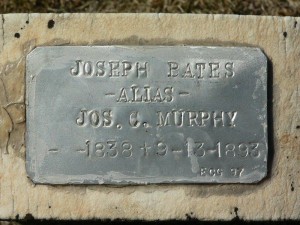

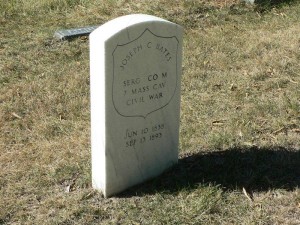
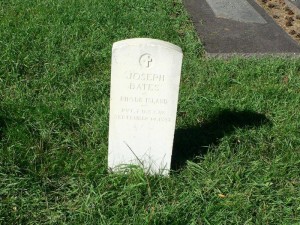
 © Denver Public Library, Western History Collection.
© Denver Public Library, Western History Collection.
